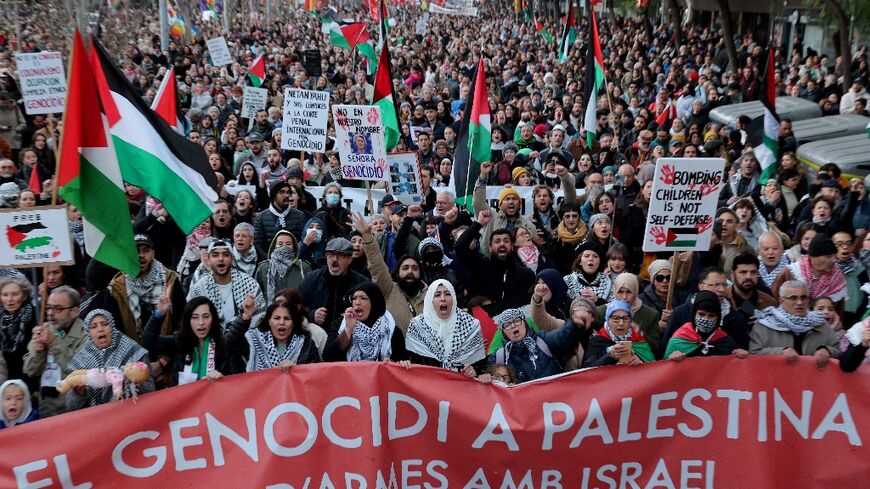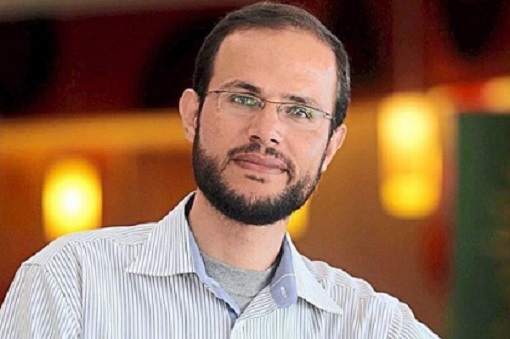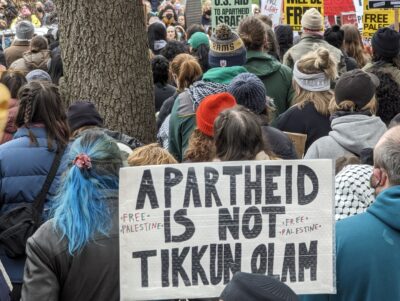
Tonight, a small detour from my usual subjects. When I was a UCLA graduate student in 1978, I studied Yiddish with Prof. Janet Hadda. During that year, she asked the class if they would meet with a filmmaker who was planning a film on Yiddish in America. The director was Pierre Sauvage, a Franco-American documentary filmmaker. We had a cozy meeting in someone’s apartment near campus and talked with him about why we were studying Yiddish, what the language meant to us, etc. Sauvage shared with us his own feelings about why he was pursuing the subject, which I found moving.

I’ve always loved Yiddish, Hebrew and Irish folk music. So I suggested to Sauvage that he contact what was then the most popular Yiddish music band in the country, Klezmorim. I may’ve gotten its address or phone number via my brother, who was then studying for his PhD at UC Berkeley, where the musical group was based. The next thing I heard was that Pierre had engaged Klezmorim to do music for the film. And the next thing I heard after that was that Yiddish–the Mame Loshn (1979) had won an Emmy Award. I was very proud both of Pierre, the film, and the small part I played in its production. It was probably the first TV documentary devoted to Yiddish, and possibly the first to have a klezmer soundtrack. Though it’s been a long time since I saw the film, I recall there is a thank-you in the credits mentioning my name.
But that’s not the reason I’m writing this. Pierre, I discovered back then, was a child survivor of the Holocaust. But he didn’t even learn this until he was 18. His parents were secular Jews and to protect him, sought to keep from him his own Jewish identity and his past as a child survivor.
But his family were not in concentration or extermination camp survivors. Rather, they were French Jews who discovered a small hamlet in the remote mountainous Auvergne region. The residents of Le Chambon-sur-Lignon, unlike most of France, were Protestant. The town pastor, Andrei Trocme, was a devout pacifist who rejected Nazi ideology. He went even further, persuading his fellow townspeople to bring Jews seeking refuge to their homes and schools. Entire families came. The children became students in the local schools (disguised as Christian of course). The adults were hidden in farmhouses and other buildings throughout the town. In this way, Trocme and his co-religionists saved the lives of as many as 5,000 Jews.

Nor was this an easy task. The Nazis visited regularly and possibly even knew what was happening under their noses. But they also knew that they were not dealing with an individual hero nor a few rabblerousers who could be arrested and executed for their temerity in resisting

them. They understood they would have to arrest the town’s religious leader and his entire flock. They thought better of it. And somehow the Jews survived.
Pierre made another documentary film, this one about Chambon, Weapons of the Spirit (trailer). Both are only available in VHS format. It was aired twice in national prime time on PBS and received a Columbia-DuPont award together with Ken Burns’ The Civil War. After it was released, the entire town was recognized by the Yad Vashem Holocaust memorial as a Righteous Among the Gentiles. This is an honor reserved for a few selected individuals who risked their lives to save Jews.
Pierre is in the midst of remastering it for a 40th anniversary edition. I highly recommend it. Nor did he stop his involvement with making the film. He also created the non-profit Chambon Foundation, as a way to offer something back to the French men and women who saved him and his family.
While accounts vary, the townspeople saved anywhere from 2,500 to 5,000 Jews. This was several times the number saved by Otto Schindler (1,200). But for some reason, the courageous pastor is hardly recognized in popular culture. There were no feature films. No Liam Neesons to play his character. But that’s precisely as the brave, humble souls of Chambon would have it. They were not ones to boast about their exploits. They did what they knew was right and hoped that God would protect them for it. And miraculously enough, he did.
The immediate reason I wrote this post was that one of those children given refuge along with Pierre was Eric Schwam. Schwam and his family arrived in the village from Austria in 1943. After the Holocaust, he remained in the village till 1950. He studied pharmacy and moved to Lyon. Eventually, he became a rich man. Earlier this month, he died at the ripe old age of 90. In his will he left $2.5-million to the inhabitants of Le Chambon. Though little is known about him and he was an extremely modset man, Schwam placed supreme valued in education and the funds will offer children of the village scholarships for study.








Thank you for this heart warming bit of history. It is always heart warming to hear of truly good people like Schindler, Nicholas George Winton, Abdol Hossein Sardari (if you don’t know the last two, google them) and many other unsung heroes. It is astonishing and more heart warming to know that there are some truly good communities like Le Chambon-sour-Lignon in the world.
Yes. A wonderful story of courage and survival.
And lest we forget, the 70,000 French Jews forced to wear yellow stars in public before being sent to the death camps by the Nazis and their Vichy French collaborators.
I was in the Protestant Cevennes region on holiday two years ago and it is very similar there: because of their history of persecution they have a very strong distrust of authority, and also record of hiding Jews during ww2. My mother had studied French and had a number of French Protestant friends. We camped at one of her friends’ village when I was small. She had two elderly aunts, very religious, unmarried, always dressed in black. When my father saw they read a communist newspaper he was surprised and when he asked them about it they explained: “Parceque nous sommes contre le systeme!”
It is worth bearing in mind that this one, tiny village saved almost as many Jews as the Zionists ‘Aliya Beit’ the illegal war-time immigration. Bearing in mind that the Zionists also opposed all rescue attempts that were not aimed at Palestine. Stephen Wise rejected Alaska, which was not subject to the US’s immigration quotas, because it was ‘too cold’. Presumably the furnaces of Auschwitz were more to his taste
It appears that the film may be accessible online to some people. Although, I don’t seem to qualify, this site, apparently, allows certain public library members or university faculty/students to view it online.
A very beautiful tribute to the people of Le Chambon Sur Lignon is given in Romain Gary’s book “Kites”. Relying a bit on my memory, the ending lines of the book are “To finish my story, I will recite again the names of Andre and Magda Trocme, and their 435 village people. Because no one is as good as they are.”